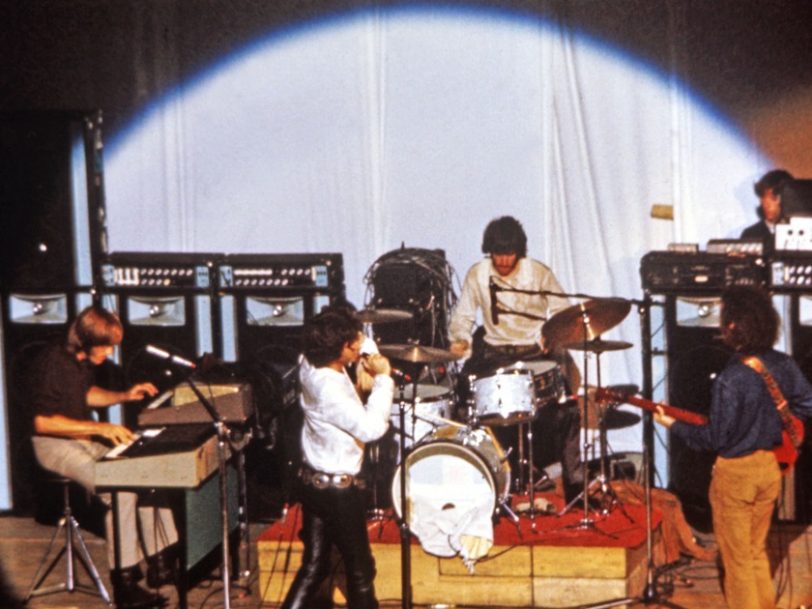“There are things you know about, and things you don’t, the known and the unknown, and in between are the doors – that’s us,” Ray Manzarek told Newsweek in 1967. The Doors’ fascination with exploring other realms through altered states of consciousness came as much from keyboardist Manzarek, guitarist Robby Krieger and drummer John Densmore’s collective interest in Transcendental Meditation as it did from frontman Jim Morrison’s Dionysian commitment to what he once described as “a long, prolonged derangement of the senses”. But whether through meditation or medication, the message of their debut single, Break On Through (To The Other Side), was clear: there were vast swathes of experience to be had – and The Doors could help listeners discover them.
Listen to the best of The Doors here.
“Jim had broken through the closed circuit of the ego”
Manzarek’s quote nodded to two different sources for the band’s name: visionary Romantic poet William Blake’s declaration, in his collection of writings from the early 1790s, The Marriage Of Heaven And Hell, that, “If the doors of perception were cleaned every thing would appear to man as it is, Infinite,” and Aldous Huxley’s 1954 book, The Doors Of Perception, which, taking its name from Blake’s quote, chronicled Huxley’s experimentation with mescaline, the hallucinogen that would become a staple drug for the 60s counterculture.
By the time The Doors recorded Break On Through (To The Other Side), during the second day of a week-long session in the summer of 1966 that spawned their self-titled debut album, the group had their own psychedelic experiences to draw from. Morrison, who was influenced by both Blake and Huxley, frequently dropped acid while seeking to discover the uncharted realms of his own mind. Though, according to fellow-traveller Manzarek, the pair didn’t often discuss their experiences in detail, it was, he said, possible to “feel the journey in the other people’s emanations”. Writing in his memoir, Light My Fire: My Life With The Doors, the keyboardist continued, “And, hell, what was there to say, anyway? It was the understanding beyond words. It was the place beyond intellect… And Jim had broken through the closed circle of the ego. He was free.”




